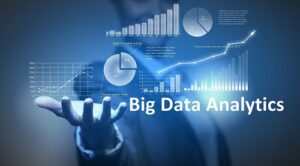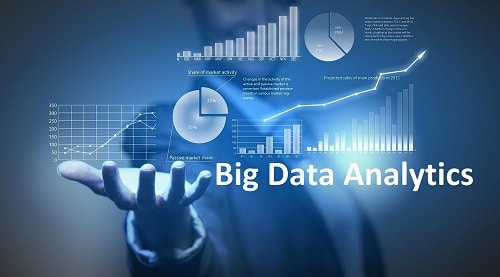With the increasing amount of data generated every day, Big Data Analytics has become crucial for businesses to extract valuable insights and gain a competitive edge. In this article, we will explore the various techniques, challenges, and opportunities associated with Big Data Analytics.
What is Big Data Analytics?
Big Data Analytics is the process of examining large and complex data sets to uncover hidden patterns, correlations, and insights. The goal is to extract valuable information that can help businesses make informed decisions and improve their operations. Big Data Analytics involves several techniques and technologies such as data mining, machine learning, and natural language processing.
Techniques of Big Data Analytics
Data Mining
Data mining is the process of discovering patterns and trends in large data sets using statistical and mathematical techniques. It involves the use of algorithms to identify hidden relationships among data elements.
Machine Learning
Machine learning is a subset of Artificial Intelligence that involves training machines to learn from data and make predictions. It involves the use of algorithms that can identify patterns and make predictions based on historical data.
Natural Language Processing
Natural Language Processing (NLP) is a subfield of computer science that focuses on the interaction between computers and humans using natural language. It involves the use of algorithms to analyze, understand, and generate human language.
Predictive Analytics
Predictive analytics involves using historical data to predict future outcomes. It involves the use of statistical algorithms and machine learning techniques to identify patterns in data and make predictions.
Prescriptive Analytics
Prescriptive analytics involves using data to recommend specific actions. It involves the use of optimization algorithms and decision-making tools to identify the best course of action.
Descriptive Analytics
Descriptive analytics involves analyzing data to understand what has happened in the past. It involves the use of visualizations and data summaries to understand trends and patterns.
Text Analytics
Text analytics involves analyzing unstructured text data to uncover insights. It involves the use of techniques such as sentiment analysis and topic modeling to understand the underlying meaning of text.
Sentiment Analysis
Sentiment analysis involves analyzing text data to determine the sentiment or emotion of the author. It is often used to understand customer sentiment and brand reputation.
Challenges of Big Data Analytics
Data Security and Privacy
Data security and privacy are major concerns when it comes to Big Data Analytics. With large amounts of data being generated and stored, there is an increased risk of data breaches and cyber attacks.
Data Quality
Data quality is another challenge that businesses face when it comes to Big Data Analytics. With large amounts of data being generated, it is important to ensure that the data is accurate and reliable.
Data Integration
Data integration is a major challenge when it comes to Big Data Analytics. With data coming from multiple sources, it can be difficult to integrate the data and ensure that it is consistent.
Talent Shortage
There is a shortage of talent when it comes to Big Data Analytics. It can be difficult to find qualified professionals with the skills and expertise needed to analyze large data sets.
Scalability
Scalability is a major challenge when it comes to Big Data Analytics. With large amounts of data being generated, it can be difficult to scale the infrastructure needed to analyze the data.
Cost
The cost of Big Data Analytics can be a major challenge for businesses. With the need for specialized infrastructure and talent, the cost can be prohibitively high for some businesses.
Opportunities of Big Data Analytics
Despite the challenges, Big Data Analytics presents numerous opportunities for businesses to gain a competitive edge and improve their operations. Some of the opportunities include:
Improved Customer Experience
By analyzing customer data, businesses can gain insights into customer behavior, preferences, and needs. This can help businesses improve their products and services, and tailor their marketing strategies to better meet customer needs.
Cost Reduction
Big Data Analytics can help businesses identify inefficiencies in their operations and reduce costs. By analyzing data from various sources, businesses can identify areas where they can streamline their operations and reduce waste.
Improved Decision Making
By analyzing data, businesses can make more informed decisions. Big Data Analytics can help businesses identify trends and patterns that may not be visible through traditional analysis methods.
New Revenue Streams
Big Data Analytics can help businesses identify new revenue streams. By analyzing data from various sources, businesses can identify opportunities to develop new products or services.
Predictive Maintenance
Big Data Analytics can help businesses identify when equipment is likely to fail, enabling them to perform maintenance before it becomes a problem. This can help businesses reduce downtime and increase productivity.
Conclusion
In conclusion, Big Data Analytics is an essential tool for businesses looking to gain insights into their operations and improve their decision-making. While there are challenges associated with Big Data Analytics, the opportunities it presents are significant. By leveraging the various techniques and technologies of Big Data Analytics, businesses can gain a competitive edge and improve their bottom line.
FAQs
- What is Big Data Analytics?
- Big Data Analytics is the process of examining large and complex data sets to uncover hidden patterns, correlations, and insights.
- What are some of the techniques used in Big Data Analytics?
- Some of the techniques used in Big Data Analytics include data mining, machine learning, natural language processing, predictive analytics, and prescriptive analytics.
- What are some of the challenges associated with Big Data Analytics?
- Some of the challenges associated with Big Data Analytics include data security and privacy, data quality, data integration, talent shortage, scalability, and cost.
- What are some of the opportunities presented by Big Data Analytics?
- Some of the opportunities presented by Big Data Analytics include improved customer experience, cost reduction, improved decision making, new revenue streams, and predictive maintenance.
- How can businesses leverage Big Data Analytics to gain a competitive edge?
- Businesses can leverage Big Data Analytics by analyzing data from various sources to gain insights into their operations, improve their decision making, and identify new revenue streams.

